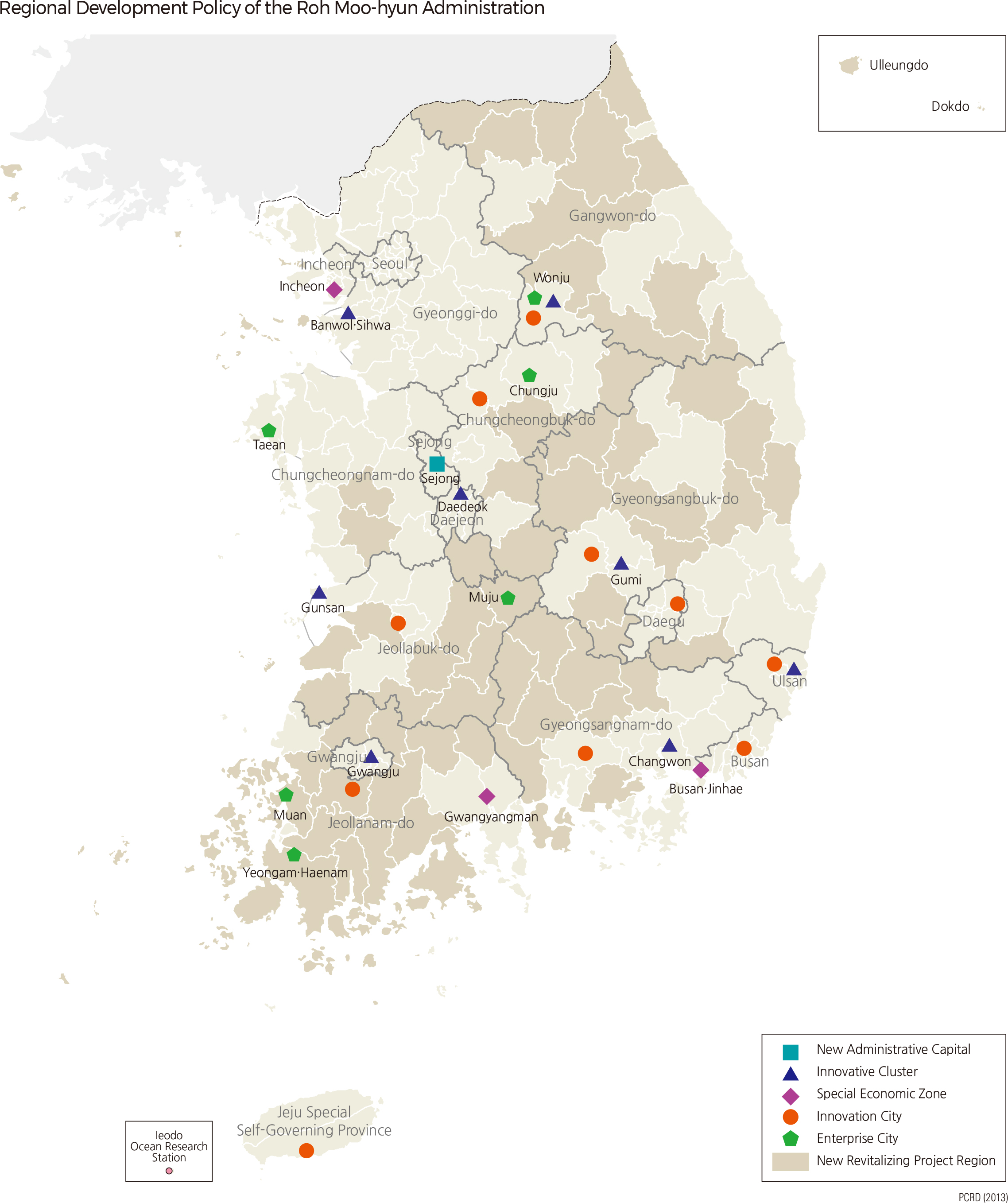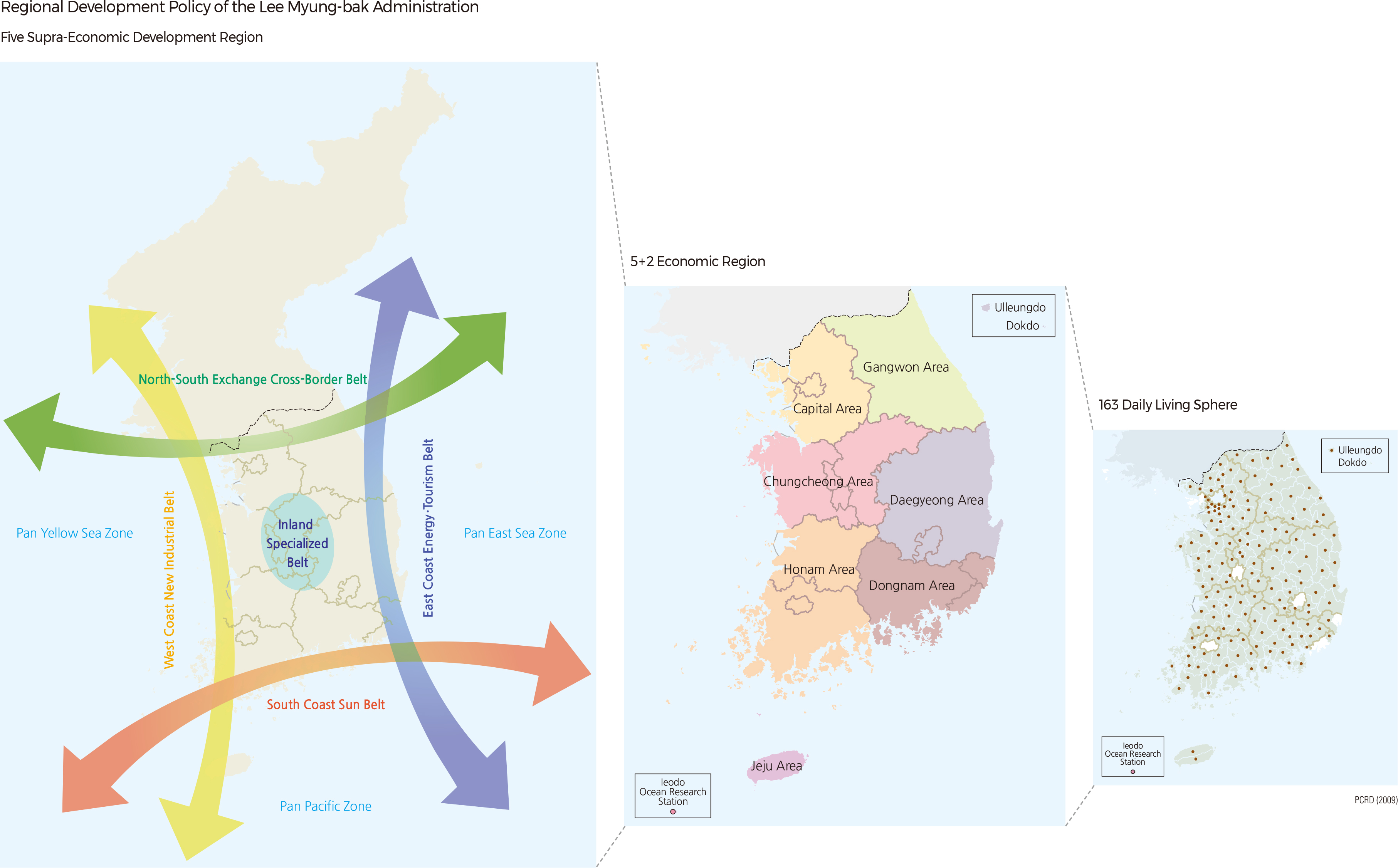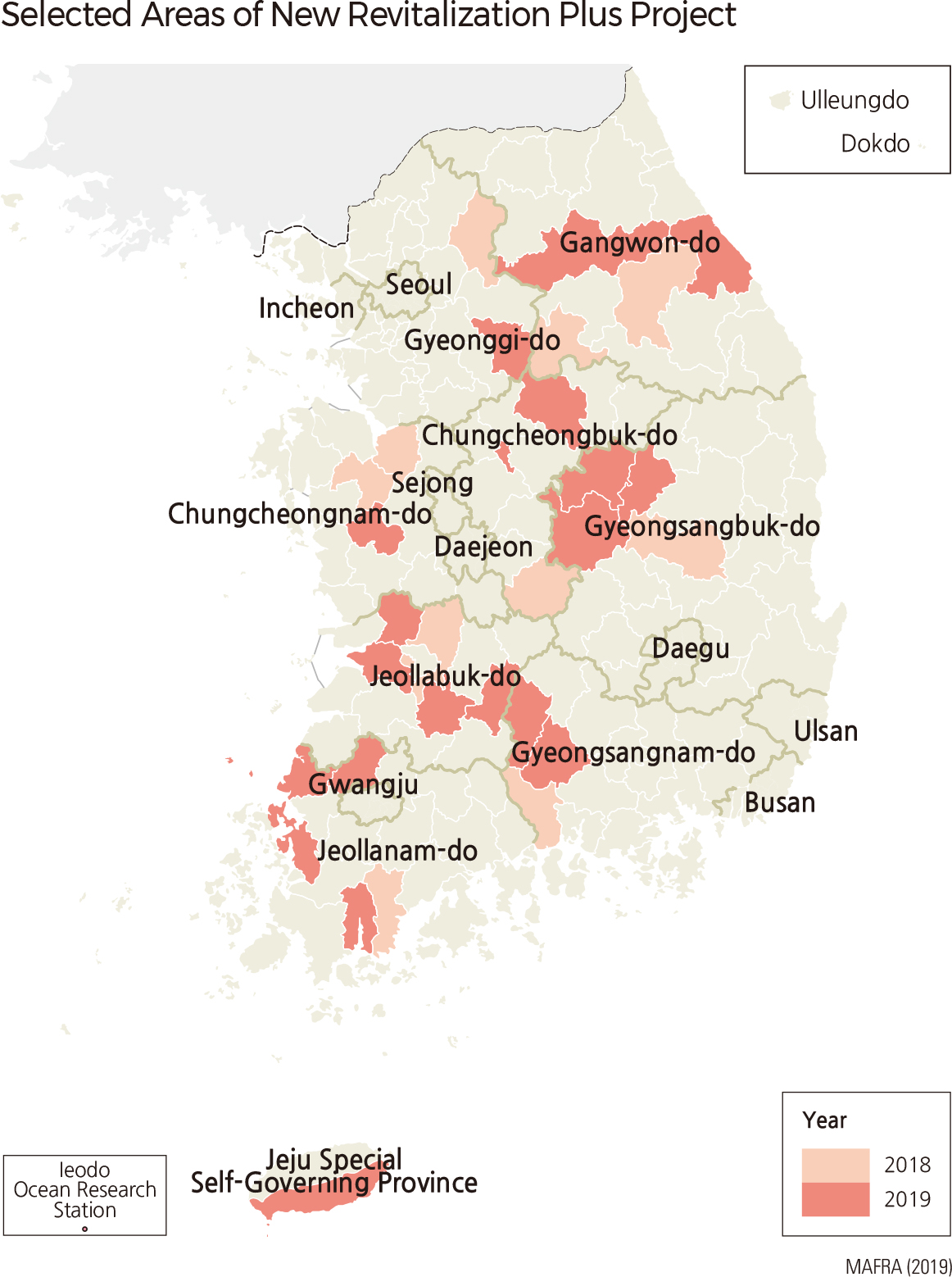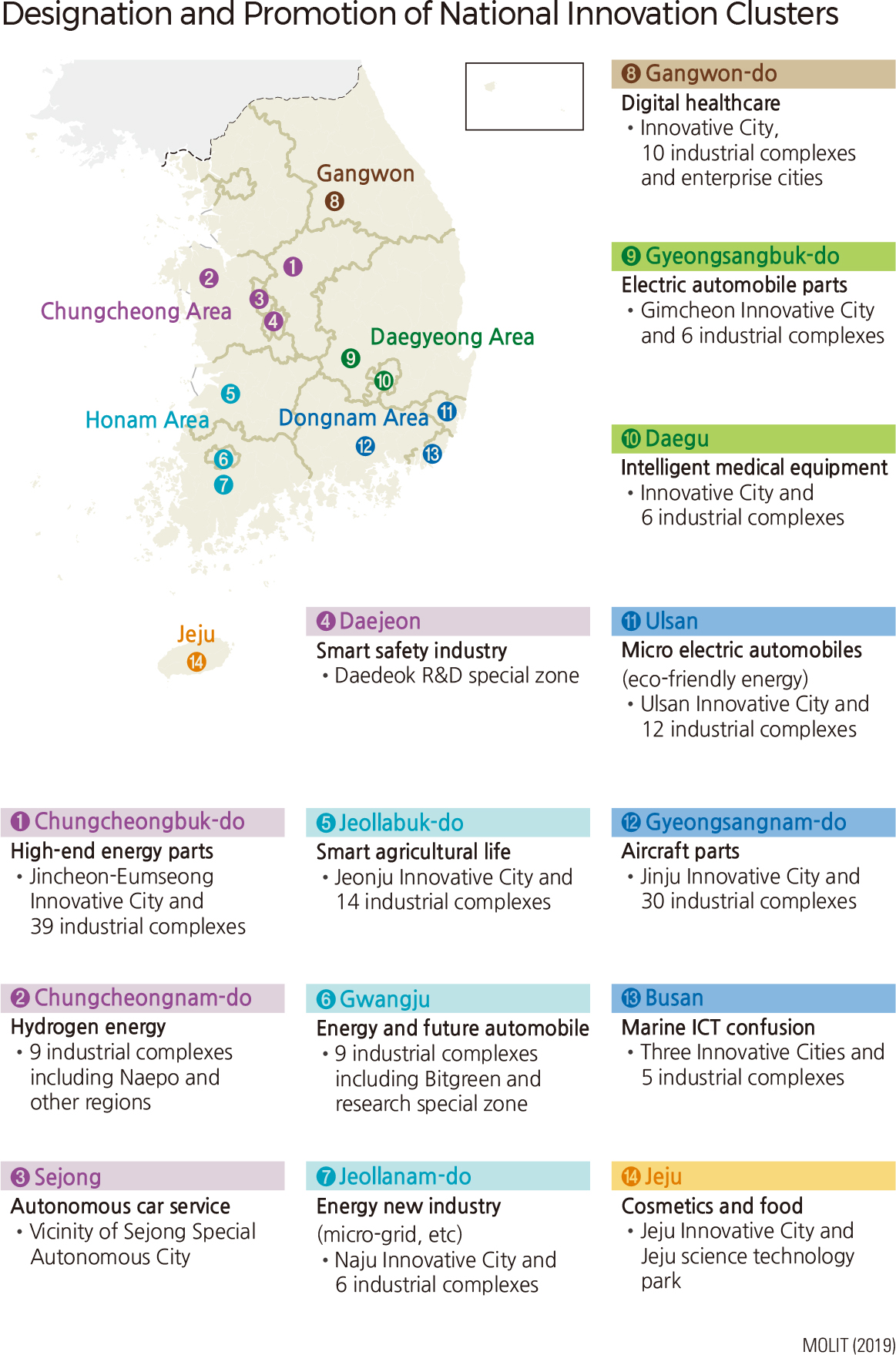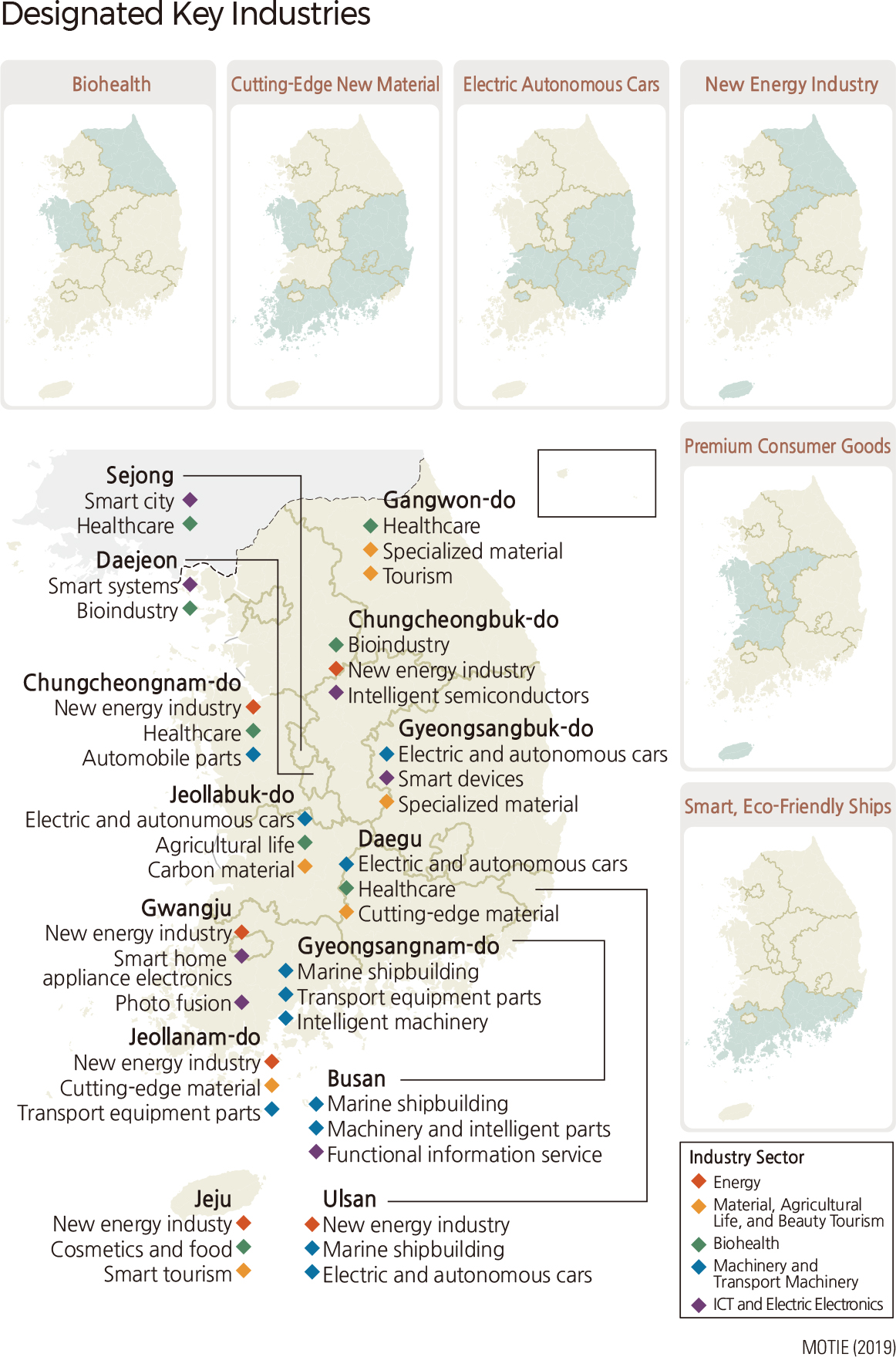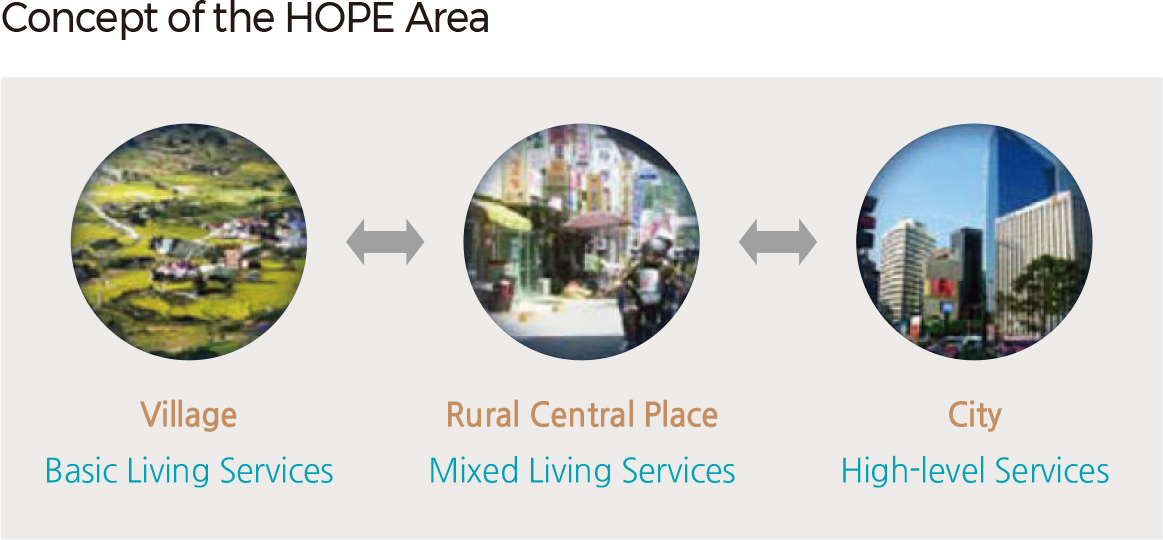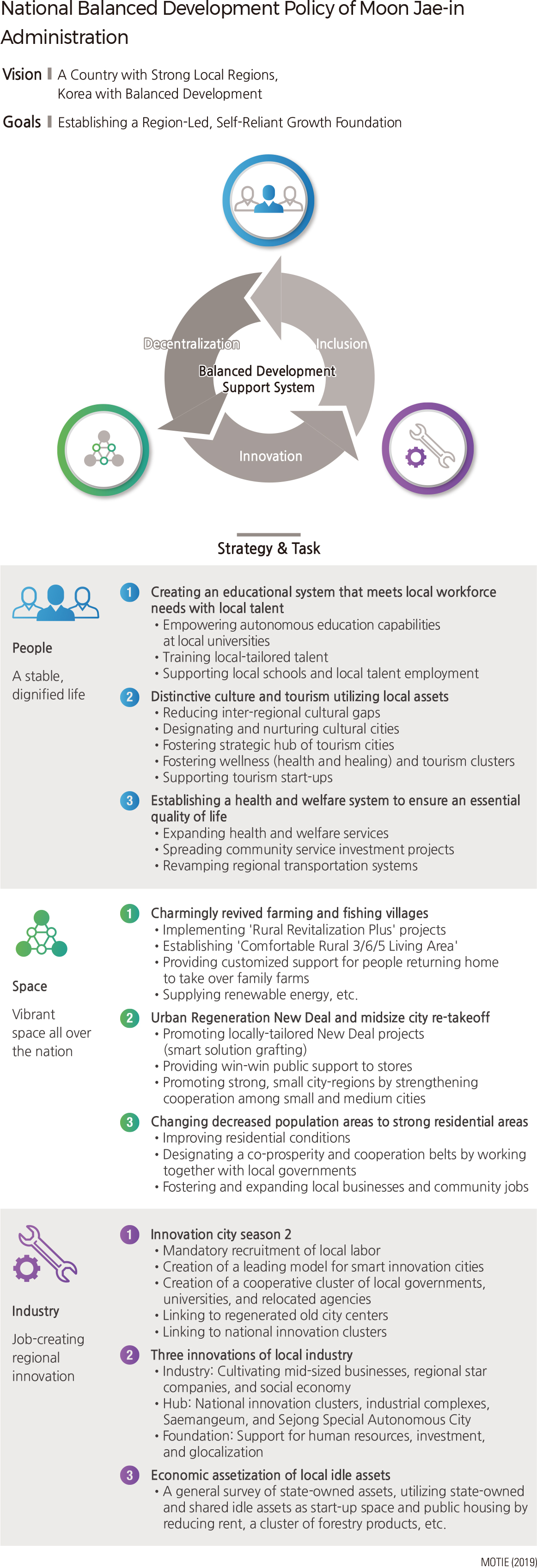English I 2019
The Roh Moo-hyun administration (2003–2008) identified two major regional problems: the deepening regional disparity due to the capital region’s polarization and the capping of national income at 10,000 USD — both of which resulted from the inherent limits of an extensive growth strategy. In response to these problems, the government adopted a vision of regional policy that aims at establishing a multi-centered regional development network. This network of initiatives was meant to be innovative, quality-oriented, and decentralized to optimize its value to a specific region and its people. The government presented a multi-faceted policy scheme that included an innovation policy, balance-oriented policy, industrial policy, spatial policy, and quality-oriented development policy. For the execution of this approach, it also established an implementation system administered by the Presidential Committee for Balanced National Development and the Special Account for Balanced National Development. In addition, the Roh Moo-hyun administration’s innovation policy, industrial policy, balance-oriented policy, and decentralization policy all utilized the existing administrative units of Metropolitan City, Do, Si, Gun, and Gu (provinces, cities, counties, and districts) as basic spatial units for regional policy.
The Lee Myung-bak administration (2008–2013) identified the following major problems affecting regional development: the weakening global competitiveness of regions, the widely dispersed small-scale investments by administrative units, poorly-differentiated development, insufficient regionally-led development capability, consumptive regional competition, and regional conflicts.
In response to these problems, the government established a vision for regional policy that sought to create competitive regions in order to secure jobs and improve the quality of life. Furthermore, the new policy aimed to form economic regions that could respond to the globalization trend. It also initiated developments based on regional features. It organized regionally based development through decentralization. It also set out to emphasize regional autonomy and cooperation and co-development across regions. For policy execution, it established an implementation system administered by the Presidential Committee for Regional Development and the Regional Development Special Account. In addition, the government reclassified the 16 existing Metropolitan Cities and Provinces into seven separate Economic Regions. It implemented leading industry projects accordingly, including projects focused on the creation of talent through education, along with 30 primary social infrastructure projects. It also presented the Seven Supra-Economic Regions Development Plan in order to promote inter-economic regional cooperation and global cooperation with neighboring countries.
The Park Geun-hye administration has created a new vision of regional development that seeks to promote “happiness to people, and hope to regions.” Her administration has vigorously pursued the regional HOPE Project in an attempt to help people realize happiness and hope in their real lives. The idea behind this approach is that the opportunity for a happy life can be achieved through the residents’ partnership with the local government. Specifically, the project attempts to foster citizen participation in governmental processes and to help address and remove policy blind spots throughout the country.
In order to achieve this vision, the government presented three promotional strategies: realizing regional happiness in daily living, tailoring package-based policy support toward this end, and enforcing regionally-based cooperation. The “happy living sphere” specifically refers to an attempt to ensure that the basic social, cultural, and physical needs are provided for all residents. The approach is comprehensive and incorporates central cities, rural central towns, and villages.
In February 2018, the Moon Jae-in administration established a new national balanced development vision and strategy based on the values of decentralization, inclusion, and innovation while understanding that it is almost impossible to overcome the national issues such as low growth, polarization, low birth rate, aging, and local annihilation with the centralized government system.
Decentralization encompasses the increase of local autonomous experience, asset accumulation, and the desire for people's participation for over 20 years, since the local election of 1995. Inclusion focuses on “equal improvement of national life,” “balanced national economic growth,” and “balanced development of regions,” as described in the Constitution, as well as consi-deration of underprivileged areas, response to local extinction, and solutions to gentrification problems in urban areas. Innovation reflects a commitment to build a virtuous cycle of innovation ecosystems in the areas of talent-specialized industries-jobs by enhancing the independence and innovation capacity of the region that is decentralized, and to develop regional innovation growth by expressing regional diversity and creativity and utilizing local idle resources.
The characteristics of the national balanced development policy of the Moon Jae-in administration represent a creative inheritance of the policies of the Roh Moo-hyun administration through strengthening the status of the National Balanced Development Committee and the Innovation City Season 2 policy. Special consideration is given to underprivileged areas through health and welfare systems to ensure a basic quality of life.
The focus of the current national balanced development policy is on the implementation of three strategies and nine core tasks. The three strategies consist of a strategy on people, a strategy on space, and a strategy on industry, each of which aims for stable and elegant living, vibrant space everywhere, and regional innovation (which, in turn, will create jobs). In addition, in order to enhance the implementation of policies, the organization shall promote the establishment of balanced development co-prosperity meetings and establish a regional innovation system. From a budgetary perspective, it will promote a contract plan (comprehensive support agreement) system and develop differential indicators for the region by developing balanced development total indicators. |
